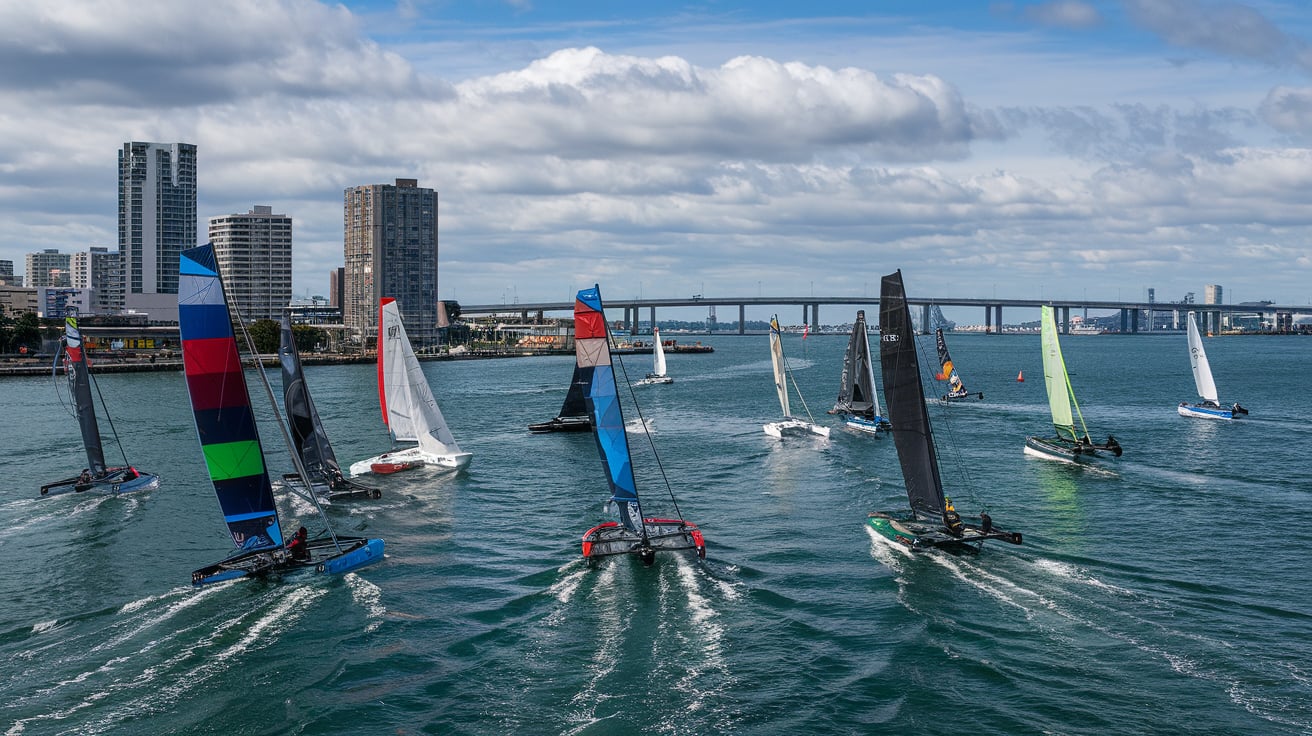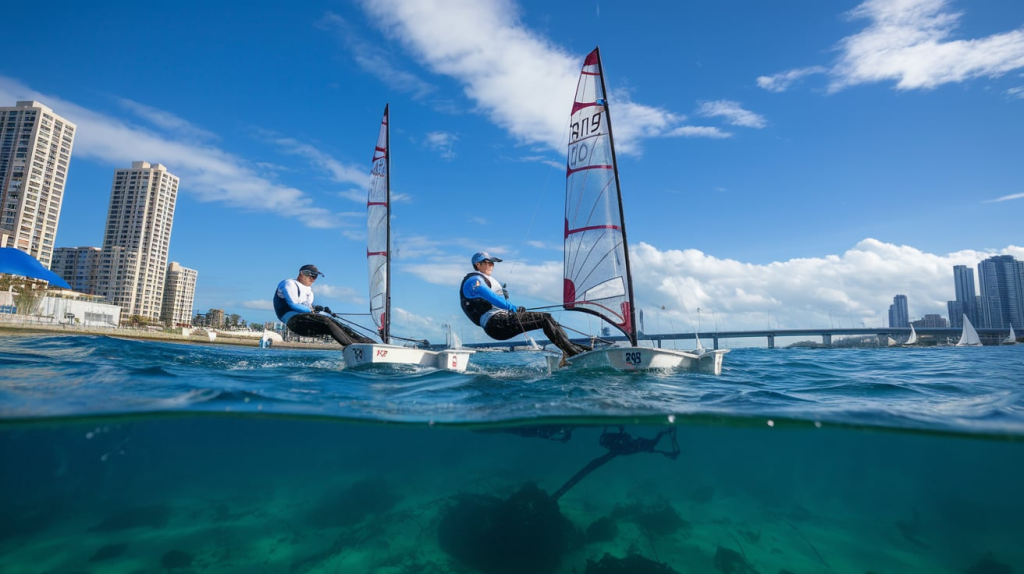Business
Exploring the Excitement of 요트 올림픽: A Deep Dive into Olympic Sailing

The 요트 올림픽, or Olympic sailing, is a thrilling showcase of skill, strategy, and teamwork, captivating audiences with its blend of athletic prowess and harmony with nature. Since its debut in 1896 at the Athens Games, 요트 올림픽 has been a staple of the Summer Olympics, except for 1904, offering a unique blend of tradition and innovation. Sailors navigate unpredictable winds and waves, competing in various boat classes like dinghies and keelboats, making every race a test of precision and endurance. From the high-speed 49er to the tactical 470, 요트 올림픽 combines adrenaline-pumping action with mental sharpness, appealing to both athletes and spectators. This article dives deep into the history, events, classes, scoring, and global impact of 요트 올림픽, crafted for school students to understand its excitement and significance in the Olympic world.
History of 요트 올림픽
The 요트 올림픽 has a rich history that began with the first modern Olympics in 1896. Although races were planned, bad weather canceled them, delaying the sport’s Olympic debut until 1900 in Paris. Since then, 요트 올림픽 has been a consistent feature, evolving with new boat classes and formats. Early competitions used tonnage-based classes, but over time, standardized classes like the Laser and 470 emerged, balancing tradition with modern technology. The inclusion of women in 1900 and the introduction of women-only events in 1988 marked significant milestones, making 요트 올림픽 a leader in gender inclusivity. Today, it remains a dynamic sport, with events like the mixed multihull introduced in 2016, showcasing its adaptability. Great Britain leads the medal tally, with nations like the USA and Australia also excelling, reflecting the global passion for 요트 올림픽.
Events and Formats in 요트 올림픽
The 요트 올림픽 features a variety of events, primarily fleet racing, where multiple boats compete simultaneously, and match racing, a one-on-one duel. Fleet racing, the most common format, tests sailors’ ability to navigate crowded courses and shifting winds. Match racing, seen in some Olympic events, emphasizes tactical head-to-head battles. The mixed multihull event, introduced in 2016, brought a new dynamic by requiring male and female sailors to compete together, promoting teamwork. Each event in 요트 올림픽 demands unique skills, from quick decision-making in high-speed 49er races to strategic planning in the 470 class. The Paris 2024 Olympics, held in Marseille, showcased these formats, with races spread over days to determine the best sailors through consistent performance, making 요트 올림픽 a thrilling spectacle for fans and participants alike.
Boat Classes in 요트 올림픽
The 요트 올림픽 includes diverse boat classes, each with distinct designs and challenges. The ILCA 7 (men’s dinghy) and ILCA 6 (women’s dinghy) are single-handed boats, relying on one sailor’s skill to harness the wind. The 470, now a mixed event since Paris 2024, is a two-person keelboat known for tactical racing. The 49er and 49erFX, high-speed skiffs, demand athleticism and coordination, thrilling audiences with their speed. The Nacra 17, a mixed multihull, combines agility and teamwork, while the Formula Kite, introduced in 2024, brings kiteboarding’s excitement to 요트 올림픽. Each class tests different aspects of sailing, from endurance to precision, ensuring variety. The evolution of classes, like the shift from tonnage to modern designs, keeps 요트 올림픽 fresh and competitive, appealing to young sailors and spectators.
Scoring System in 요트 올림픽
The scoring system in 요트 올림픽 is straightforward yet strategic. In fleet racing, sailors earn points based on their finishing position: first place gets 1 point, second gets 2, and so on. The goal is to have the lowest total score after multiple races, typically 10, with the worst race score discarded. The final medal race, exclusive to the top 10 sailors, awards double points, adding drama to the competition. This system rewards consistency and allows comebacks, as seen in races where sailors recover from early setbacks. For example, in the 2024 Paris Olympics, Korean sailor Ha Jimin competed in the ILCA 7, finishing 34th overall, showing the challenge of maintaining low scores. The scoring in 요트 올림픽 ensures every race counts, keeping athletes and fans on edge until the final moment.
Global Impact and Popularity of 요트 올림픽
The 요트 올림픽 has a global following, with countries like Great Britain, the USA, and Australia dominating medals, while nations like South Korea contribute rising stars like Ha Jimin. The sport promotes environmental awareness, as sailors rely on natural elements like wind and water, aligning with Olympic sustainability goals. Events like the 2020 Tokyo Olympics at Enoshima Yacht Harbor highlighted regeneration efforts, making 요트 올림픽 a model for eco-friendly sports. Its inclusivity, with mixed and women’s events, inspires young athletes worldwide. In South Korea, the Korea Sailing Federation (KSAF) supports dinghy and kiteboarding programs, encouraging youth participation. The sport’s blend of tradition, innovation, and accessibility ensures its growing popularity, with 요트 올림픽 inspiring school students to explore sailing as both a competitive and recreational activity.
Training and Skills for 요트 올림픽

Competing in 요트 올림픽 requires physical fitness, mental sharpness, and technical expertise. Sailors train rigorously, focusing on strength, endurance, and balance to handle boats in rough conditions. Mental skills like quick decision-making and weather analysis are crucial, as conditions change rapidly during races. For example, in the 49er class, sailors must coordinate movements while reading wind shifts, demanding teamwork and precision. Training programs, like those run by the KSAF, emphasize youth development, teaching navigation and boat handling. Aspiring Olympians often start in dinghy classes, progressing to advanced boats like the Nacra 17. The 요트 올림픽 also fosters life skills like discipline and resilience, making it appealing to school students dreaming of Olympic glory. With dedication, young sailors can aim for the global stage of 요트 올림픽.
Challenges and Future of 요트 올림픽
The 요트 올림픽 faces challenges like unpredictable weather, which can disrupt races, as seen in the 1896 cancellation. High costs of equipment and training can limit participation, though programs like KSAF aim to make sailing accessible. The sport is evolving, with new classes like Formula Kite attracting younger audiences and media attention. The future of 요트 올림픽 looks bright, with innovations like eco-friendly boat designs and virtual training tools enhancing accessibility. The Paris 2024 Olympics introduced kiteboarding, signaling a shift toward faster, spectator-friendly events. As sustainability and inclusivity grow, 요트 올림픽 will likely inspire more school students to engage with sailing, ensuring its legacy. By balancing tradition with modern appeal, 요트 올림픽 remains a dynamic part of the Olympic movement, ready to captivate future generations.
What is 요트 올림픽?
요트 올림픽, or Olympic sailing, is a competitive sport in the Summer Olympics where sailors race boats like dinghies, keelboats, or kiteboards. It tests skills like navigation, strategy, and teamwork, with events held in formats like fleet racing and match racing.
How are points awarded in 요트 올림픽?
In 요트 올림픽, sailors earn points based on their race position: 1 point for first, 2 for second, and so on. The lowest total score after multiple races wins. The medal race for the top 10 doubles the points, adding excitement.
What boat classes are in 요트 올림픽?
요트 올림픽 includes classes like ILCA 7 (men’s dinghy), ILCA 6 (women’s dinghy), 470 (mixed keelboat), 49er, 49erFX, Nacra 17 (mixed multihull), and Formula Kite. Each class has unique designs, testing different sailing skills.
Who can compete in 요트 올림픽?
Both men and women compete in 요트 올림픽, with events for single-gender and mixed teams. Athletes qualify through world championships or regional games, like the Asian Games, with training starting as young as school age.
Why is 요트 올림픽 popular?
요트 올림픽 is popular for its thrilling races, strategic depth, and connection to nature. Its inclusivity, with mixed and women’s events, and global reach, with stars like Ha Jimin, inspire young athletes and fans worldwide.
Conclusion
The 요트 올림픽 is more than just a race; it’s a celebration of skill, strategy, and nature’s power. From its historic roots in 1896 to modern innovations like Formula Kite, it captivates school students and global audiences with its dynamic events and diverse boat classes. The scoring system adds drama, rewarding consistency and bold comebacks, while training fosters discipline and teamwork. Despite challenges like weather and costs, the sport’s inclusivity and sustainability efforts ensure its bright future. Whether you’re a student dreaming of sailing or a fan watching the waves, 요트 올림픽 offers excitement and inspiration, making it a cherished part of the Olympic legacy.
요트 올림픽
-

 Business10 months ago
Business10 months agoBusiness Casual for Women: The Ultimate Guide to Dressing Professionally with Style!
-

 Business10 months ago
Business10 months agoCoffee Cart Business: Start Your Profitable Venture Today
-

 Celebrity10 months ago
Celebrity10 months agoEian Burton: Uncovering the Inspiring Journey of a Visionary Leader
-

 Entertainment7 months ago
Entertainment7 months agoHow MangaBuddy Enhances Your Manga Reading Experience




















